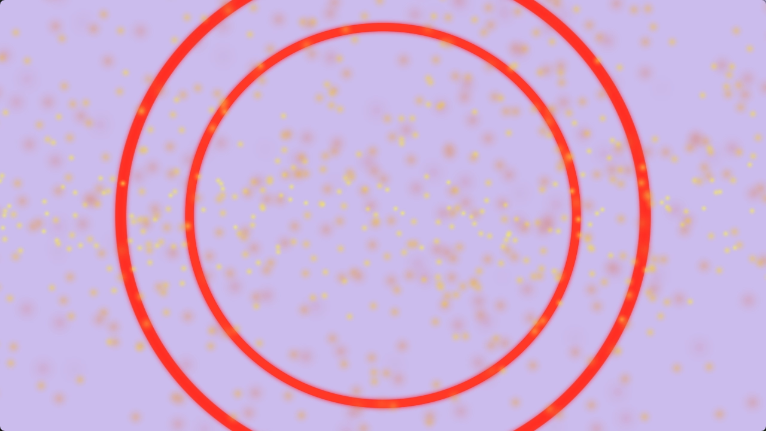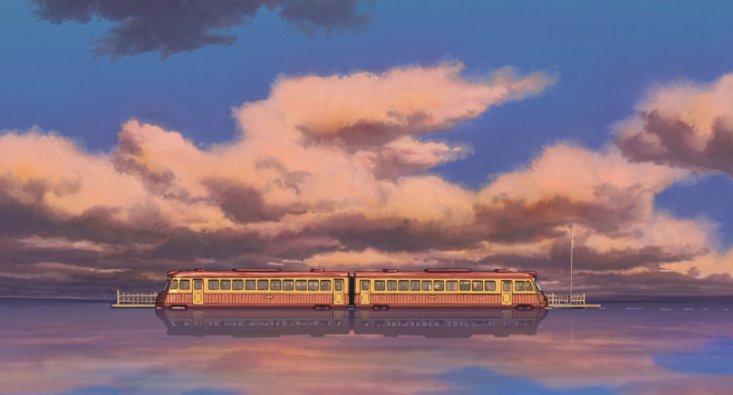For this first studio prompt, we were told to listen to the late David Bowie’s song “Space Oddity” and to think about what exactly Bowie was trying to say to us and to decide what we will say in return. I grew up listening to Bowie, I know his songs front to back, and especially this one. He sings of an astronaut, Major Tom, who launches up into outer space… never to return. The song is dizzying due to the fact that the instrumentals are almost the only thing that tells of Major Tom’s journey in the cosmos. Though this astronaut is lost, we know that his adventure continues, and that there is much to be found on his way.
I am terrified of outer space. Yes, it is grand an beautiful, but also horrifying, dark and without air. I commend all astronauts around the world who pursue that lifelong career of exploration and discovery, who are brave enough to leave home knowing that it will be years before they return. In my response video, I decided to say “Stay. There’s much to explore here.” Which is why my video is called “Earth Oddity.”
At the beginning of my video, I pan outwards from a desert landscape, heated by a sizzling sun. The sun rises on its own, slowly. And after the intro of the song, sand dunes of different shades of earth tones grow up from the ground, pointing high to the sky. They then spin out of control, dizzyingly, and grow big enough to consume the screen.
Once the screen has become a uniform color, trim lines in disguise as snakes slither in zigzags across the screen. This part in particular shows that despite unsavory environments, it can still allow the possibility of sustaining life. Each trim line (snake) is colored vibrantly in red, green, or yellow. I put a Thread effect on each one to mimic a pattern of common snake skin. The trim lines travel across the screen in different directions, and at different speeds.
At the next part of the song, I wanted to go even further down in scale of life on earth. To a microscopic level even. This is the point when I used the kaleidoscope effect for the prompt. I went onto google images to search for the right image that portrayed an even smaller form of life. Initially I was going to choose a photo of flowers and mountains, but I realized that I didn’t have to go that far down just yet. Ultimately I ended up choosing a photo of a Monarch butterfly, lightly perched on the central disc of a pink flower against the background of a forest.
I spend several moments keyframing the transition of the kaleidoscope. The amount of color combinations the Monarch butterfly photo yielded was quite satisfying. The evolution of the image synced well with the upbeat melody of the song. I saw it as though we were looking through a microscope at tiny organisms and watching them writhe with life energy.
Afterwards I faded out of the kaleidoscoped image and onto a light blue background, reminiscent of our daylight sky. At this point I wanted to give the feeling of one looking upwards at the clouds and becoming overwhelmed with the notion that we are so small and the planet is so vast.
For the cloud animation I created a few white ovals of different opacities, and added a repeater effect to each one of them. Each repeater effect allowed the oval copies to move at their own velocities and turn in different directions. Apparently there are at least 10 basic types of clouds… But I think I read in a textbook once that there are actually 30 different types of cloud patterns/behaviors. There wasn’t exactly an easy way to animate 30 different cloud types, however, I did my best at showing some diversity and versatility with the movement and portrayal of the animated ovals. This next screenshot shows several circles animated with repeaters to go along with ambient music.
To continue with the theme of going further down into smaller scales of life, my next animation was of a fractal, with which I wanted to imagine a cell. In the few moments the fractal is on screen, it revolves around and manipulates itself in size, shape, and color. I wanted this cell/fractal to demonstrate the smallest scale of active life. After turning the fractal inside-out, I minimize the scale almost completely so that it disappears from the screen entirely. In a way this is us zooming out of the macro perspective we were at with observing the fractal cell.
After zooming out of the macro perspective, we come back to the chaotic kaleidoscope shot of microscopic life. This time I chose to animate a photo of a field of colorful flowers before a majestic mountain range. The kaleidoscope evolves along to the cheerful tune of the song, before it quickly begins to multiply upon the screen, resulting in a very detailed pattern of natural colors.
Ultimately, with this video, the message I put forward is that there is plenty to explore here on planet Earth. There is an abundance of colors and light and life. Yes, there may be that plus even more up in space, but we know more about outer space than we do about our own oceans… Save the risk, unlike Major Tom, and explore what this world has to offer before setting off for other planets.










